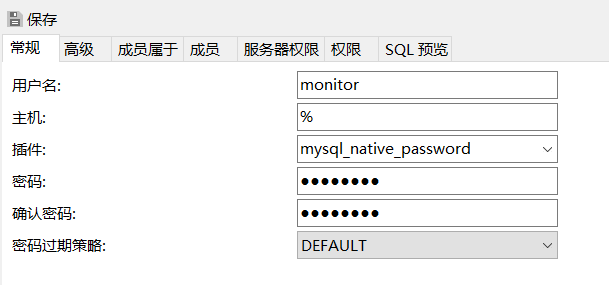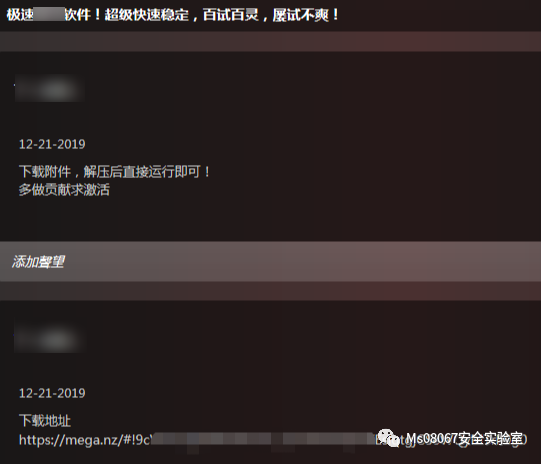我试图找出如何最好地做到这一点,我有一个地图Polygon上绘制。 因为它似乎并不虽然谷歌地图API V2有一个多边形触摸检测。 我不知道是否有可能检测触摸点是否在多边形内? 如果是这样那么我的主要目标是如何,是在地图上勾勒出一个状态,当用户点击该状态会显示自定义视图中的更多细节。 截至目前,我能捕捉到MapOnClick地图,但是当用户在里面水龙头Polygon我想polygon.getID()所设定的Toast 。 我是个新手,所以我道歉,如果我不太清楚。
googleMap.setOnMapClickListener(new OnMapClickListener()
{
public void onMapClick(LatLng point)
{
boolean checkPoly = true;
Toast.makeText(MainActivity.this,"The Location is outside of the Area", Toast.LENGTH_LONG).show();
}
});
}
}
catch (Exception e) {
Log.e("APP","Failed", e);
}
好吧,这是我有半工作至今
private boolean rayCastIntersect(LatLng tap, LatLng vertA, LatLng vertB) {
double aY = vertA.latitude;
double bY = vertB.latitude;
double aX = vertA.longitude;
double bX = vertB.longitude;
double pY = tap.latitude;
double pX = tap.longitude;
if (aY > bY) {
aX = vertB.longitude;
aY = vertB.latitude;
bX = vertA.longitude;
bX = vertA.latitude;
}
System.out.println("aY: "+aY+" aX : "+aX);
System.out.println("bY: "+bY+" bX : "+bX);
if (pX < 0) pX += 360;
if (aX < 0) aX += 360;
if (bX < 0) bX += 360;
if (pY == aY || pY == bY) pY += 0.00000001;
if ((pY > bY || pY < aY) || (pX > Math.max(aX, bX))) return false;
if (pX < Math.min(aX, bX))
return true;
// }
double m = (aX != bX) ? ((bY - aY) / (bX - aX)) : aX;
double bee = (aX != pX) ? ((pY - aY) / (pX - aX)) : aX;
double x = (pY - bee) / m;
return x > pX;
}
}
那我遇到的问题是,直到它到达另一个触摸是真实的每个多边形的左侧。 这有什么错我的算法,将导致此问题? 任何帮助,将不胜感激。
你想解决的问题是在多边形点测试。
为了帮助可视光线投射的概念:
绘制在一张纸上一个多边形。 然后,开始在任何随机点,画一条直线到页面的右侧。 如果您符合您的多边形相交奇数倍,这意味着你的出发点是多边形内。
那么,你如何做到这一点的代码?
您的多边形是由顶点的列表: ArrayList<Geopoint> vertices 。 你需要在每一个看Line Segment分别,看看你的Ray相交的
private boolean isPointInPolygon(Geopoint tap, ArrayList<Geopoint> vertices) {
int intersectCount = 0;
for(int j=0; j<vertices.size()-1; j++) {
if( rayCastIntersect(tap, vertices.get(j), vertices.get(j+1)) ) {
intersectCount++;
}
}
return (intersectCount%2) == 1); // odd = inside, even = outside;
}
private boolean rayCastIntersect(Geopoint tap, Geopoint vertA, Geopoint vertB) {
double aY = vertA.getLatitude();
double bY = vertB.getLatitude();
double aX = vertA.getLongitude();
double bX = vertB.getLongitude();
double pY = tap.getLatitude();
double pX = tap.getLongitude();
if ( (aY>pY && bY>pY) || (aY<pY && bY<pY) || (aX<pX && bX<pX) ) {
return false; // a and b can't both be above or below pt.y, and a or b must be east of pt.x
}
double m = (aY-bY) / (aX-bX); // Rise over run
double bee = (-aX) * m + aY; // y = mx + b
double x = (pY - bee) / m; // algebra is neat!
return x > pX;
}
谷歌地图支持库现在有做这个检查你一个静态方法:
PolyUtil.containsLocation(LatLng point, List<LatLng>polygon, boolean geodesic);
虽然文档不指南中明确提到它的方法是存在的
地图支持库文档
随着谷歌发布的游戏服务8.4.0 ,地图API已经包括用于添加支持OnPolygonClickListener为多边形。 这两个多边形 , 折线和覆盖支持类似的活动。
你只需要调用GoogleMap.setOnPolygonClickListener(OnPolygonClickListener listener)来进行设置,并相应地对其他听众( setOnPolylineClickListener ,&C):
map.setOnPolygonClickListener(new GoogleMap.OnPolygonClickListener() {
@Override
public void onPolygonClick(Polygon polygon) {
// Handle click ...
}
});
虽然有点晚了,它很好地解决了这个用例。
这是一个完整的工作示例知道,如果触摸发生在一个多边形。 一些问题的答案是复杂得多,他们需要。 该解决方案采用“Android的地图-utils的”
// compile 'com.google.maps.android:android-maps-utils:0.3.4'
private ArrayList<Polygon> polygonList = new ArrayList<>();
private void addMyPolygons() {
PolygonOptions options = new PolygonOptions();
// TODO: make your polygon's however you want
Polygon polygon = googleMap.addPolygon(options);
polygonList.add(polygon);
}
@Override
public void onMapClick(LatLng point) {
boolean contains = false;
for (Polygon p : polygonList) {
contains = PolyUtil.containsLocation(point, p.getPoints(), false);
if (contains) break;
}
Toast.makeText(getActivity(), "Click in polygon? "
+ contains, Toast.LENGTH_SHORT).show();
}
@Override
protected void onMapReady(View view, Bundle savedInstanceState) {
googleMap.setOnMapClickListener(this);
addMyPolygons();
}
虽然user1504495已回答总之,我一直用它。 但是,而不是使用全地图实用程序库 ,请使用此方法。
从您的活动类通相应PARAMS:
if (area.containsLocation(Touchablelatlong, listLatlong, true))
isMarkerINSide = true;
else
isMarkerINSide = false;
并放在一个单独的类如下:
/**
* Computes whether the given point lies inside the specified polygon.
* The polygon is always cosidered closed, regardless of whether the last point equals
* the first or not.
* Inside is defined as not containing the South Pole -- the South Pole is always outside.
* The polygon is formed of great circle segments if geodesic is true, and of rhumb
* (loxodromic) segments otherwise.
*/
public static boolean containsLocation(LatLng point, List<LatLng> polygon, boolean geodesic) {
final int size = polygon.size();
if (size == 0) {
return false;
}
double lat3 = toRadians(point.latitude);
double lng3 = toRadians(point.longitude);
LatLng prev = polygon.get(size - 1);
double lat1 = toRadians(prev.latitude);
double lng1 = toRadians(prev.longitude);
int nIntersect = 0;
for (LatLng point2 : polygon) {
double dLng3 = wrap(lng3 - lng1, -PI, PI);
// Special case: point equal to vertex is inside.
if (lat3 == lat1 && dLng3 == 0) {
return true;
}
double lat2 = toRadians(point2.latitude);
double lng2 = toRadians(point2.longitude);
// Offset longitudes by -lng1.
if (intersects(lat1, lat2, wrap(lng2 - lng1, -PI, PI), lat3, dLng3, geodesic)) {
++nIntersect;
}
lat1 = lat2;
lng1 = lng2;
}
return (nIntersect & 1) != 0;
}
/**
* Wraps the given value into the inclusive-exclusive interval between min and max.
* @param n The value to wrap.
* @param min The minimum.
* @param max The maximum.
*/
static double wrap(double n, double min, double max) {
return (n >= min && n < max) ? n : (mod(n - min, max - min) + min);
}
/**
* Returns the non-negative remainder of x / m.
* @param x The operand.
* @param m The modulus.
*/
static double mod(double x, double m) {
return ((x % m) + m) % m;
}
/**
* Computes whether the vertical segment (lat3, lng3) to South Pole intersects the segment
* (lat1, lng1) to (lat2, lng2).
* Longitudes are offset by -lng1; the implicit lng1 becomes 0.
*/
private static boolean intersects(double lat1, double lat2, double lng2,
double lat3, double lng3, boolean geodesic) {
// Both ends on the same side of lng3.
if ((lng3 >= 0 && lng3 >= lng2) || (lng3 < 0 && lng3 < lng2)) {
return false;
}
// Point is South Pole.
if (lat3 <= -PI/2) {
return false;
}
// Any segment end is a pole.
if (lat1 <= -PI/2 || lat2 <= -PI/2 || lat1 >= PI/2 || lat2 >= PI/2) {
return false;
}
if (lng2 <= -PI) {
return false;
}
double linearLat = (lat1 * (lng2 - lng3) + lat2 * lng3) / lng2;
// Northern hemisphere and point under lat-lng line.
if (lat1 >= 0 && lat2 >= 0 && lat3 < linearLat) {
return false;
}
// Southern hemisphere and point above lat-lng line.
if (lat1 <= 0 && lat2 <= 0 && lat3 >= linearLat) {
return true;
}
// North Pole.
if (lat3 >= PI/2) {
return true;
}
// Compare lat3 with latitude on the GC/Rhumb segment corresponding to lng3.
// Compare through a strictly-increasing function (tan() or mercator()) as convenient.
return geodesic ?
tan(lat3) >= tanLatGC(lat1, lat2, lng2, lng3) :
mercator(lat3) >= mercatorLatRhumb(lat1, lat2, lng2, lng3);
}
/**
* Returns tan(latitude-at-lng3) on the great circle (lat1, lng1) to (lat2, lng2). lng1==0.
* See http://williams.best.vwh.net/avform.htm .
*/
private static double tanLatGC(double lat1, double lat2, double lng2, double lng3) {
return (tan(lat1) * sin(lng2 - lng3) + tan(lat2) * sin(lng3)) / sin(lng2);
}
/**
* Returns mercator Y corresponding to latitude.
* See http://en.wikipedia.org/wiki/Mercator_projection .
*/
static double mercator(double lat) {
return log(tan(lat * 0.5 + PI/4));
}
/**
* Returns mercator(latitude-at-lng3) on the Rhumb line (lat1, lng1) to (lat2, lng2). lng1==0.
*/
private static double mercatorLatRhumb(double lat1, double lat2, double lng2, double lng3) {
return (mercator(lat1) * (lng2 - lng3) + mercator(lat2) * lng3) / lng2;
}
只是为了一致性 - 当用户点击一个多边形(或其他叠加)onMapClick不叫,而且它在Javadoc提及。
我做了一个变通方法来拦截水龙头事件MapFragment处理之前和项目点的地图坐标,并检查点是任何多边形内,如在其他答案建议。
查看更多细节在这里





